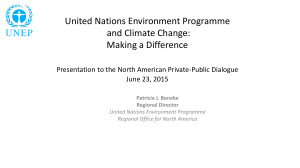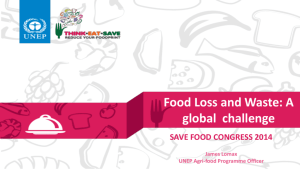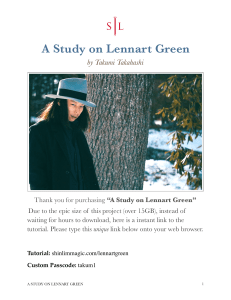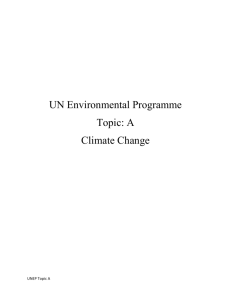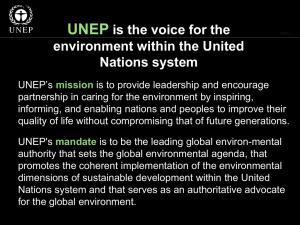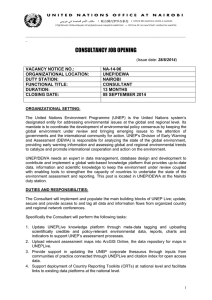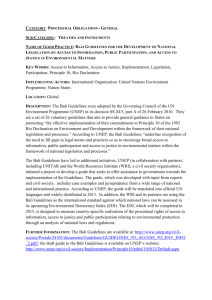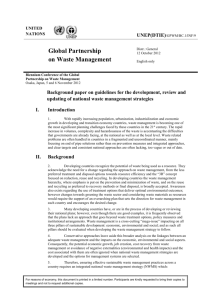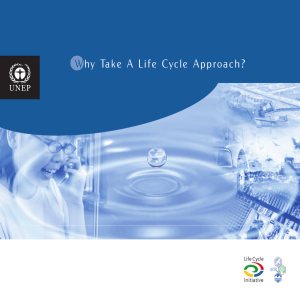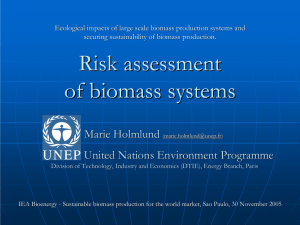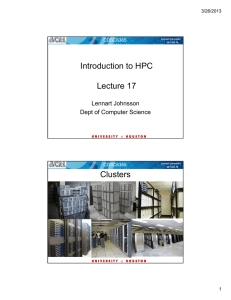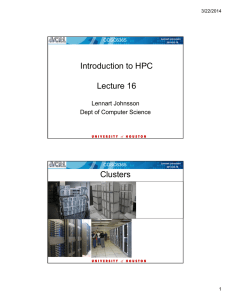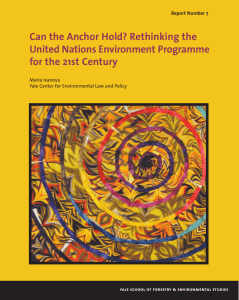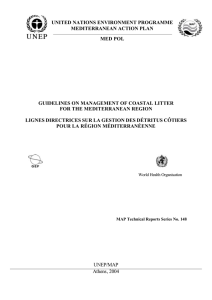Discussion Forum on « Why Trade Matters in Development Strategies » Presentation
advertisement
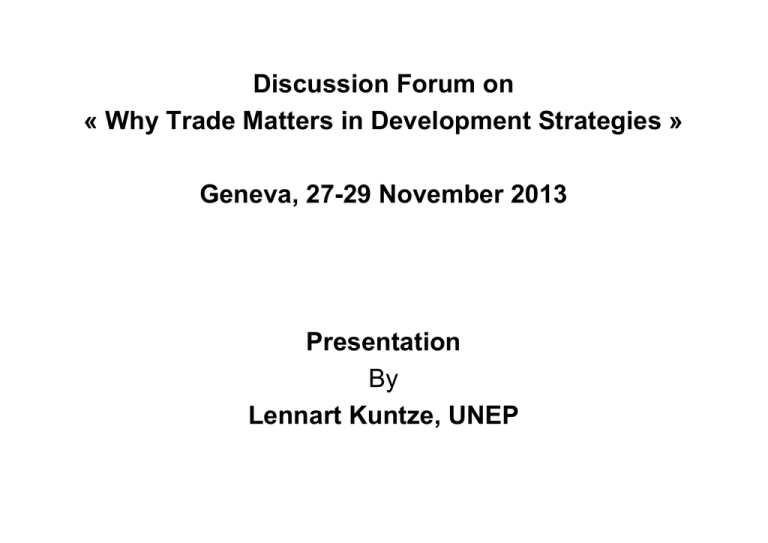
Discussion Forum on « Why Trade Matters in Development Strategies » Geneva, 27-29 November 2013 Presentation By Lennart Kuntze, UNEP Trade, Environment and Climate Change UNEP’s experiences on the Trade and Environment Nexus Lennart Kuntze, UNEP Trade, Policy and Planning Unit Economics and Trade Branch (ETB) Division of Technology, Industry and Economics (DTIE) Trade and Environment Nexus Trade is vital for the global economy, but creates stress on the environment. • Since 2002, the financial volume of international trade has more than tripled • Global exports of goods and services in 2012: US$ 22.8 trillion • Total developing country export increase: 39.2% in 2002 • GHG emissions from international maritime & aviation transport: + 88% in the last 25 years • Two-fifths of global raw material extracted are used to enable global exports • However, trade can also facilitate resource efficiency and sustainable development. 31.7% of global GDP 50% in 2010 The Rio+20 Context and the Green Economy The opportunities at the trade and environment nexus are emphasized in the Rio+20 Outcome Document and embedded in the Green Economy concept. • • Rio+20 outcome document The Future We Want: • Green economy as a tool for achieving sustainable development • Mandate for the UN System to coordinate the GE transition • Trade as an engine for development and sustained economic growth UNEP defines a Green Economy as: • An economy that results in improved human well-being and social equity, while significantly reducing environmental risks and ecological scarcities Trade and the Green Economy Green Economy and trade can interact in a mutually beneficial way. Trade as an engine Appropriately regulated, trade can drive development, sustained economic growth & the Green Economy transition Trade Green Economy Trade opportunities Global market in low-carbon and energy efficient technologies US$ 2.2 trillion in 2020 GE-TOP Phase I: Global Report The GE-TOP report explores triple-win situations at the nexus of environment, trade and development. • The GE-TOP report analyses: • Emerging trade opportunities and related challenges in six economic sectors (incl. case studies) • Enabling conditions (policy tools, market based instruments etc.) for harnessing green export opportunities GE-TOP Phase II: Country Work In order to apply the conceptual framework of the GE-TOP report, UNEP undertakes projects at the country level. • Objective: • Identify, assess and inform green trade opportunities associated with GE transition • Approach: • Demand-driven • Local ownership • Inclusive and participatory stakeholder process • Harnessing synergies with partners • Result: • Recommendations on how to seize identified trade opportunities GE–TOP Phase II: Pilot Projects Sustainable trade opportunities in one key sector are analyzed and enabling conditions to scale up these trade opportunities are identified. • GE-TOP Ghana: • • GE-TOP Peru: • • Foster solar energy exports under the umbrella of the WAPP (regional integration) Address obstacles to certification and export of Peruvian BioTrade products GE-TOP Viet Nam: • Assess trade opportunities from sustainable aquaculture certification What’s more … UNEP collaborates with many partners in different trade-related projects. • • Projects and Partnerships • PAGE – Partnership for Action on Green Economy • UNFSS - United Nations Forum on Sustainability Standards • GGKP – Green Growth Knowledge Platform • United Nations Inter Agency Cluster on Trade and Productive Capacity Knowledge Products • Handbook on Green Economy and Trade • Thematic Papers (e.g. South-South Trade in Selected Environmental Goods) Contact Thank you! Lennart Kuntze Trade, Policy and Planning Unit Economics and Trade Branch United Nations Environment Programme lennart.kuntze@unep.org

